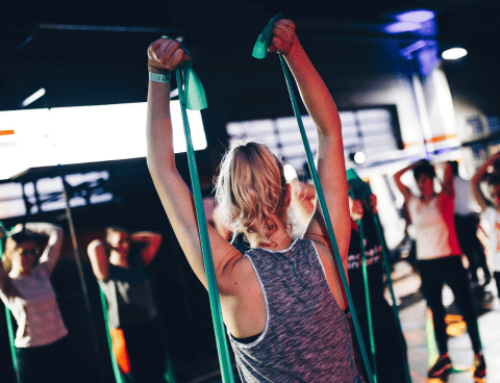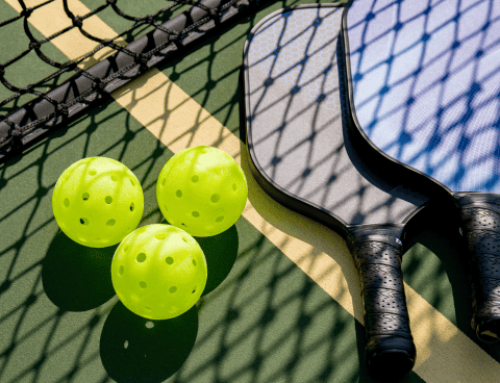The Overhead Squat: A Simple Exercise That Works Your Entire Body
![]()
The Overhead Squat is an exercise you don’t see used much any more to condition athletes. It is still widely used with Olympic lifters and CrossFitters, but it has fallen out of favor in recent years. Simply put, it is one of the best exercises for developing your upper body, core, lower body, shoulder/lower-body mobility, balance and total body strength. However, it requires a lot of technique, which is what discourages many people from learning it.
RELATED: Fix Imbalances With the Overhead Squat
The Overhead Squat has two basic variations, one that uses a barbell and one that uses a kettlebell. In this article, we’ll start with the barbell variation and then move on to the kettlebell variation.
Barbell Overhead Squats
To perform this exercise with a barbell, it’s a good idea either to be in a tall cage or to use bumper plates. This will make it safe to drop the bar if you get into trouble. To perform the exercise, place your feet approximately hip-width apart. Stand up tall with your chest out and your shoulders back. Begin by taking a wide grip on the bar (wider than shoulder-width). Extend you arms and hold the bar overhead.
Position the bar slightly back so that it’s in line with your hips. Try to have your arms next to your ears. This positioning is important for balance later on. From this starting position, lower yourself into a Squat by pushing your hips back. When you reach the bottom position, reverse directions and stand back up again.
RELATED: Front Squat vs. Back Squat: What’s the Better Choice for Athletes
Coaching Points
A few things to focus on with the Barbell Overhead Squat:
- Keep your feet flat on the floor. Letting your heels come up will make you lose your balance, and you won’t be able to control the bar.
- Keep your arms extended and don’t bend them. A good cue: push against the bar throughout the exercise. Bending your arms will let the bar move, which will make balance difficult or impossible.
- Keep the weight over your hips. Too far forward or too far back and you will lose your balance.
Most people begin this exercise with the barbell and add weight as they become more comfortable. With practice, you will be able to lift more weight with the Overhead Squat than you can with the Snatch.
Kettlebell Overhead Squats
The kettlebell variation is more friendly to your shoulders. The kettlebell’s unique design allows you to position it in a manner that is better for shoulder health than the barbell. In addition, it requires you to develop one side at a time, helping to prevent imbalances that the barbell can occasionally hide.
Start with your feet hip-width apart, your chest out and your shoulders pulled back. Hold the kettlebell in your right hand and pressed overhead. Hold your left arm up and out so that it is abducted and parallel to the ground. The kettlebell should be held slightly back so that it’s in line with your hips. From this position, squat down as far as is comfortable. Reverse directions and stand back up again. Perform for the desired number of repetitions and then switch sides.
With the kettlebell variation, keep the same coaching points in mind as provided for the barbell variation—i.e., arms straight, feet flat, weight over the hips.
When it comes to using the Overhead Squat in your program, there are a few important things to keep in mind. First, it’s not a high volume exercise. It requires a lot of technique and concentration, so extreme fatigue is not a good idea. Generally, sets of four to eight reps are plenty. Second, an experienced athlete will do this exercise with 50 to 80% of their Snatch, but a less experienced athlete should gradually increase the weight and build up their strength and technique. Finally, the exercise can be used in a total body strength workout or as a warm-up for a power workout. For example:
RELATED: Bulletproof Your Squat With These 4 Progressions
Strength workout
- Overhead Squats: 3×6@60%
- Back Squats: 3×4-8@85%
- Romanian Deadlifts: 3×4-8
- Bench Press: 3×4-8@85%
- Bent-Over Rows: 3×4-8
Power workout
- Overhead Squats: 1×6@50%, 1×6@60%, 1×6@70%
- Power Snatches: 3×4@70%
- Power Cleans: 3×4@70%
- Clean Pulls: 3×6@75%
RECOMMENDED FOR YOU
MOST POPULAR
The Overhead Squat: A Simple Exercise That Works Your Entire Body
![]()
The Overhead Squat is an exercise you don’t see used much any more to condition athletes. It is still widely used with Olympic lifters and CrossFitters, but it has fallen out of favor in recent years. Simply put, it is one of the best exercises for developing your upper body, core, lower body, shoulder/lower-body mobility, balance and total body strength. However, it requires a lot of technique, which is what discourages many people from learning it.
RELATED: Fix Imbalances With the Overhead Squat
The Overhead Squat has two basic variations, one that uses a barbell and one that uses a kettlebell. In this article, we’ll start with the barbell variation and then move on to the kettlebell variation.
Barbell Overhead Squats
To perform this exercise with a barbell, it’s a good idea either to be in a tall cage or to use bumper plates. This will make it safe to drop the bar if you get into trouble. To perform the exercise, place your feet approximately hip-width apart. Stand up tall with your chest out and your shoulders back. Begin by taking a wide grip on the bar (wider than shoulder-width). Extend you arms and hold the bar overhead.
Position the bar slightly back so that it’s in line with your hips. Try to have your arms next to your ears. This positioning is important for balance later on. From this starting position, lower yourself into a Squat by pushing your hips back. When you reach the bottom position, reverse directions and stand back up again.
RELATED: Front Squat vs. Back Squat: What’s the Better Choice for Athletes
Coaching Points
A few things to focus on with the Barbell Overhead Squat:
- Keep your feet flat on the floor. Letting your heels come up will make you lose your balance, and you won’t be able to control the bar.
- Keep your arms extended and don’t bend them. A good cue: push against the bar throughout the exercise. Bending your arms will let the bar move, which will make balance difficult or impossible.
- Keep the weight over your hips. Too far forward or too far back and you will lose your balance.
Most people begin this exercise with the barbell and add weight as they become more comfortable. With practice, you will be able to lift more weight with the Overhead Squat than you can with the Snatch.
Kettlebell Overhead Squats
The kettlebell variation is more friendly to your shoulders. The kettlebell’s unique design allows you to position it in a manner that is better for shoulder health than the barbell. In addition, it requires you to develop one side at a time, helping to prevent imbalances that the barbell can occasionally hide.
Start with your feet hip-width apart, your chest out and your shoulders pulled back. Hold the kettlebell in your right hand and pressed overhead. Hold your left arm up and out so that it is abducted and parallel to the ground. The kettlebell should be held slightly back so that it’s in line with your hips. From this position, squat down as far as is comfortable. Reverse directions and stand back up again. Perform for the desired number of repetitions and then switch sides.
With the kettlebell variation, keep the same coaching points in mind as provided for the barbell variation—i.e., arms straight, feet flat, weight over the hips.
When it comes to using the Overhead Squat in your program, there are a few important things to keep in mind. First, it’s not a high volume exercise. It requires a lot of technique and concentration, so extreme fatigue is not a good idea. Generally, sets of four to eight reps are plenty. Second, an experienced athlete will do this exercise with 50 to 80% of their Snatch, but a less experienced athlete should gradually increase the weight and build up their strength and technique. Finally, the exercise can be used in a total body strength workout or as a warm-up for a power workout. For example:
RELATED: Bulletproof Your Squat With These 4 Progressions
Strength workout
- Overhead Squats: 3×6@60%
- Back Squats: 3×4-8@85%
- Romanian Deadlifts: 3×4-8
- Bench Press: 3×4-8@85%
- Bent-Over Rows: 3×4-8
Power workout
- Overhead Squats: 1×6@50%, 1×6@60%, 1×6@70%
- Power Snatches: 3×4@70%
- Power Cleans: 3×4@70%
- Clean Pulls: 3×6@75%











